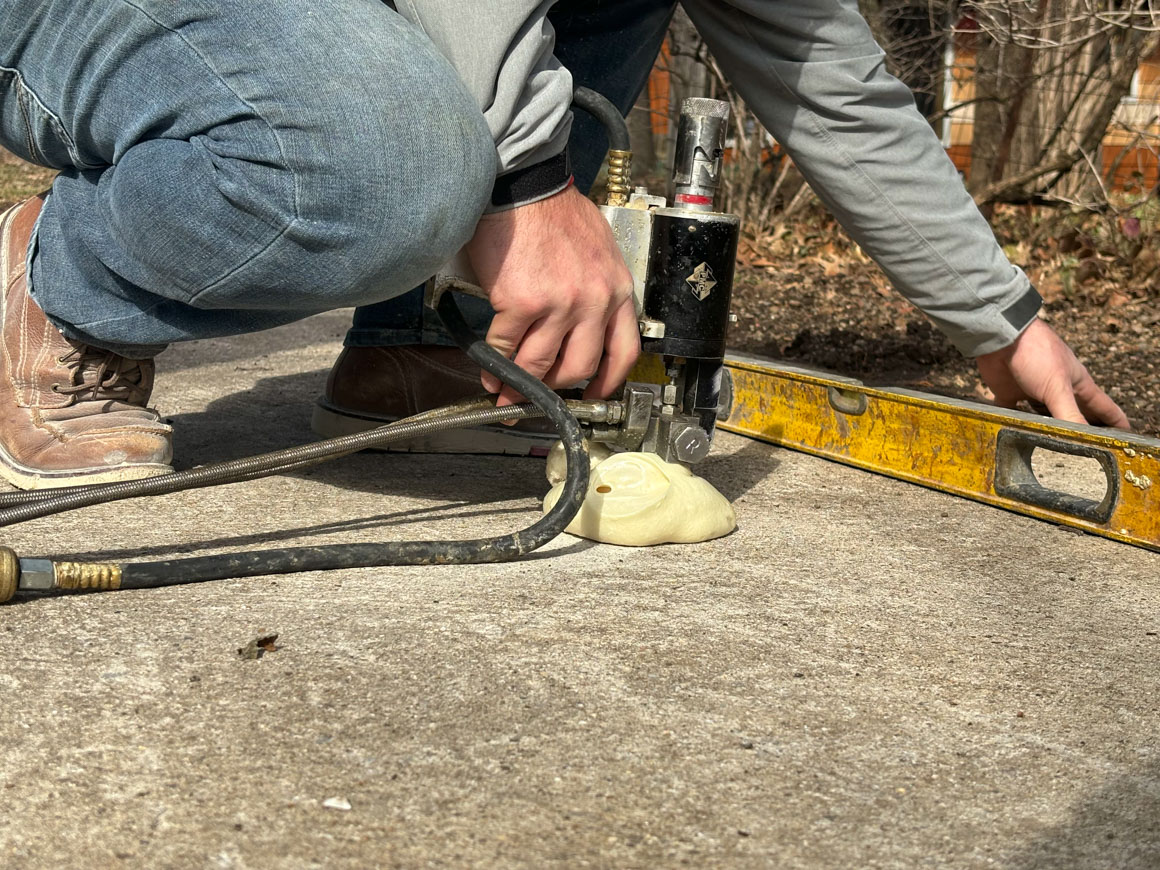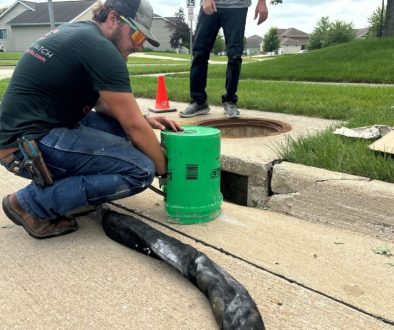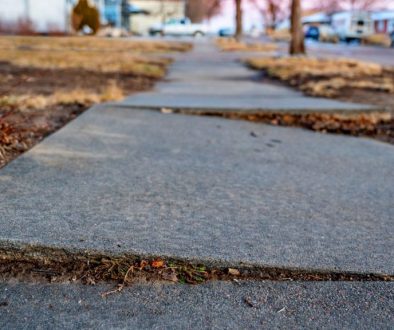When Should You Raise Your Concrete Instead of Replacing It?
Is It Time to Repair or Replace Your Concrete?
If you have a sunken driveway, sidewalk, patio, or commercial concrete surface, you might assume replacement is your only option. In many cases, raising your existing concrete back to its original height is a faster, more cost-effective, and longer lasting solution.
Let’s break down when concrete lifting is the best alternative to replacement, how to assess slab condition, and the factors that determine the best option for your situation.
Signs That Your Concrete Needs Lifting Instead of Replacement
Concrete lifting is the preferred solution when:
- Your slab is structurally sound – No major cracks or severe deterioration.
- Your concrete has sunk due to soil issues – Erosion or poor compaction caused settling.
- You want a cost-effective fix – Raising concrete typically costs 50-70% less than replacement.
- You need a quick solution – Most lifting projects are completed in just a few hours.
When Concrete Lifting is the Best Solution
- Your concrete is sinking, but not severely cracked
Best for: Driveways, sidewalks, patios, and pool decks with minor cracks and sinking.
If your concrete is sinking due to soil compaction, water erosion, or poor initial installation, lifting it with polyurethane foam is the best choice. The foam expands beneath the slab, lifting it back into place while filling voids in the soil.- Example from our service area: In Iowa and Illinois, heavy seasonal freeze-thaw cycles cause soil to expand in winter and shrink in summer. This often results in driveway sinking near garage entrances. Polyurethane lifting corrects the issue without needing a full tear-put.
- You Have Uneven Sidewalks or Walkways
Best for: HOA communities, municipalities, and residential sidewalks.
Uneven sidewalks create trip hazards and potential liability concerns, especially for homeowners’ associations (HOAs) and cities that are responsible for maintaining public walkways. Instead of replacing sections, polyurethane foam can be injected beneath the affected slabs to raise them back to level.- Local Example: Many cities in the Midwest, including Des Moines, IA, and Peoria, IL, have sidewalk safety compliance programs. Cities often use concrete lifting to correct minor trip hazards rather than fully replacing walkways.
- Your Driveway or Garage Floor is Settling
Best for: Driveways with sinking at the edges or cracks near garage doors.
Sinking driveways and garage floors are often caused by poor soil compaction during construction or water erosion from improper drainage. If the slab itself is not crumbling, lifting it is much cheaper and just as effective as replacement.- Insight: In Marion, IA, a homeowner had a driveway that settled over 3 inches at the garage entrance due to water runoff. We lifted the slab back into place in under two hours. A full replacement would have taken days of demolition and drying time.
- Your Patio or Pool Deck is Uneven but Intact
Best for: Concrete pool decks, patios, and porches that have shifted but are still structurally sound.
Patios and pool decks often settle due to improper base preparation or soil erosion caused by improper water drainage. If the slab is still intact and free of major cracks, polyurethane foam lifting is the ideal fix.- Service Area Insight: In Cedar Rapids, IA, a homeowner had a sunken pool deck that became a trip hazard. Instead of replacing it (which would have cost over $10,000), we lifted and stabilized it for less than $3,000—and it was ready to use the same day.
When Concrete Replacement is the Only Option
Concrete lifting won’t work if:
- Your Concrete Has Major Structural Damage – If the slab has large cracks running through it or severe spalling (surface deterioration), replacement is the only option.
- The Subgrade is Completely Compromised – If the soil beneath the slab is completely washed out, additional soil stabilization may be needed before lifting can be considered.
- You Want a Completely New Look – If your goal is to redesign your driveway, patio, or commercial space, full replacement may be better for aesthetic reasons.
Cost Comparison: Lifting vs. Replacing Concrete
| Repair Type | Cost Range (Per Project) | Completion Time | Lifespan |
| Concrete Lifting | $1,500 – $3,500 | 1 Day | 10+ Years |
| Full Replacement | $5,000 – $15,000 | 3–7 Days | 20+ Years |
Key Takeaway: If the concrete is structurally sound, lifting is 50%–70% cheaper and requires zero demolition—saving both money and time.
Final Verdict: Should You Raise or Replace Your Concrete?
Choose Concrete Lifting If:
- Your slab is sinking but structurally sound.
- You want a quick and affordable repair.
- You need a non-invasive fix without heavy machinery.
Choose Concrete Replacement If:
- Your concrete has deep cracks or crumbling edges.
- The soil beneath is completely eroded and unstable.
- You want to redesign the area entirely.
Not Sure What’s Right for Your Property?
We offer free inspections to help you choose the best solution. Contact us today to schedule your evaluation.




